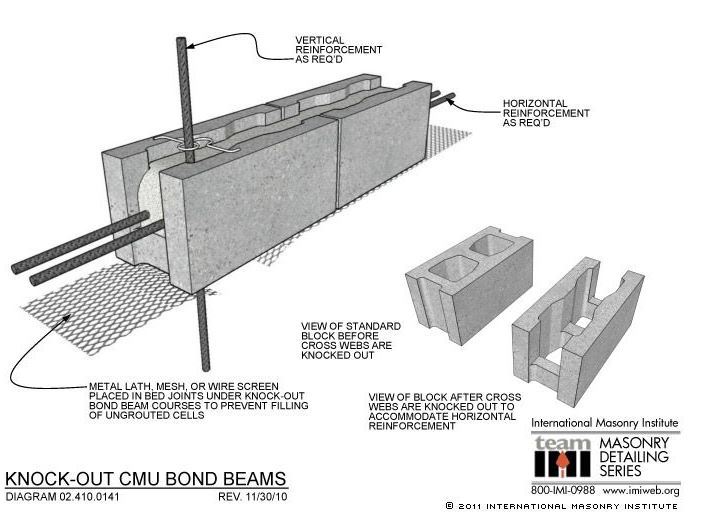Dick:
Isn’t there also a “H” shaped block which has a center cross shell, but no end cross shells, which opens up the cores a bit, and doesn’t make the head joint area so tough to grout full? Those poorly filled head joint areas would be particularly bad in a deep beam action. The 5 courses of 8" bond beam block is an awful idea. The bond at each horiz. joint is not very good in terms of transmitting horiz. shear, and it is very difficult to get any vert. shear reinf’g. from top to bottom. It’s akin to claiming that 5-2x6's stacked atop each other, with no glue, makes a laminated wood beam. The individual 2x6's slide past each other when the deep beam tries to work, no hoirz. shear strength, no shear flow tying the pieces together to form the deep beam. The filled/grouted vert. cores and vert. reinf. serve this same function, tying the deep beam together over its depth, and providing a good compression block at the top. I would make the bot. course a 16" deep lintel block, set the rebar (horiz. and vert.), and grout it to within an inch or so of the top, leaving the grout fill rough. Set the next 3 courses of “H” blk. being careful to minimize mortar dropping, or removing them, set some top reinf’g., then grout the top 3 courses.


![[cheers] [cheers] [cheers]](/data/assets/smilies/cheers.gif)